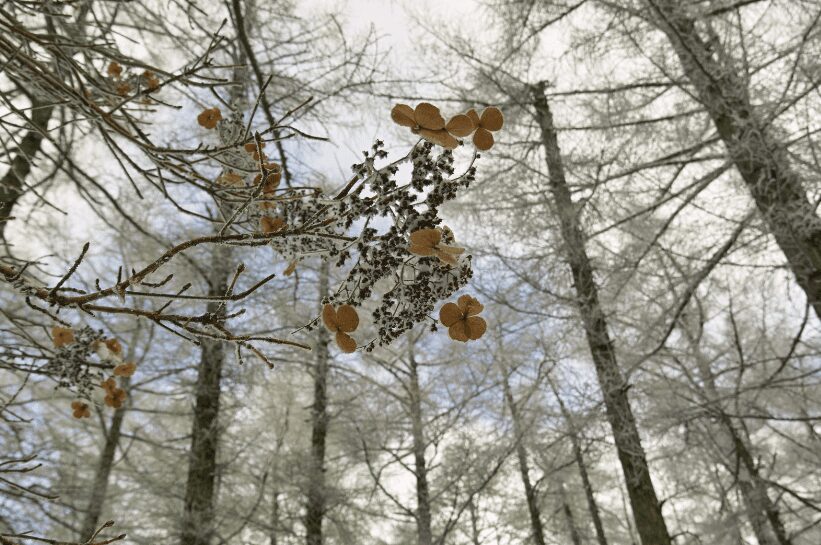
Climbing hydrangeas climb over arbors, fences, tree trunks, or low stone walls by attaching their aerial rootlets, called holdfasts, to surfaces. They also climb up walls of buildings.
The sturdy branches of mature climbing hydrangeas require strong support structures. Climbing hydrangeas also scramble over the ground and hillsides.
Plant climbing hydrangeas in well-drained soil. Water them frequently after you first plant them. After they are securely established, they require very little maintenance.
Their fragrant white lace-cap flowers can grow to 10 inches wide. Sometimes the flowers cover the entire plant for a stunning, almost glowing effect, especially in a shade garden at night.
The flowers, attractive to bees, eventually fade to cream and brown by fall.
Although most climbing hydrangeas produce white flowers, ‘Winter Glow’ blooms unique coral-green flowers, and its foliage turns purple in the late fall.
Their heart-shaped leaves are usually dark green and glossy, but some variegated cultivars are available. ‘Miranda’ has dark green leaves with yellow-green margins that may fade to cream in the summer.
Hydrangea Varied
‘Kuga Variegated’ is a striking plant. Its young stems start orange and pink, then mature to cream and green. Its new leaves are splashed with cream, but the mature leaves lose most variegation.
After climbing hydrangeas reach maturity, their exfoliating, reddish brown bark is a beautiful winter feature. Because the stems are sturdy bark, plants can develop bush shapes if not attached to a structure.
These plants are also attractive in the corner of a shade garden.
Whether you plant your climbing hydrangea to climb a wall, clamber over a pergola or scramble down a hillside, it adds beauty and light to your garden.
Climbing Hydrangea Plant Profile
Botanical Name: Hydrangea anomala/ Subsp. Petiolaris.
Description: Its glossy green foliage makes climbing hydrangeas particularly attractive vines.
In the Fruit and Vegetable section of the Chicago Botanic Garden, one climbing hydrangea is more than 60 feet long and may grow to 80 feet.
These climbers tolerate shade and prefer moist, well-drained soil, although they can survive in sunny spots even if their owner forgets to water regularly. Their aerial rootlets cling to arbors, fences, and walls without damaging them.
Their flowers start creamy white and turn rose to russet. Left on the vine, they’re attractive all winter, especially with the brown bark that adds texture to the garden.
Don’t lose heart if a vine seems slow to establish itself. It takes a few years to take off.
Challenges: Even hosta leaves turn brown, climbing hydrangea leaves don’t seem to wilt in heavy clay soil as the literature says they will, even during dry spells.
Did you know: While 35 species of hydrangeas (mainly shrubs) are found worldwide, there are only 14 in cultivation, and many of these are rare.
Climbing hydrangeas don’t need pruning, and they are supposedly easy to propagate.
Simply cut the tip and plant a new shoot with two nodes and some air roots that will become terrestrial roots.
Final Word
Most of us are reluctant to do radical, seemingly destructive pruning in high summer, which spoils the ‘look’ of the garden for a few weeks at peak appreciation time.
But I am afraid that every so often, a gardener’s got to do what a gardener’s got to do, as the saying (almost) goes.
The good feeling you get when you know you have done something very horticulturally
sensible somewhat makes up for the bother and the temporary ugliness.






















